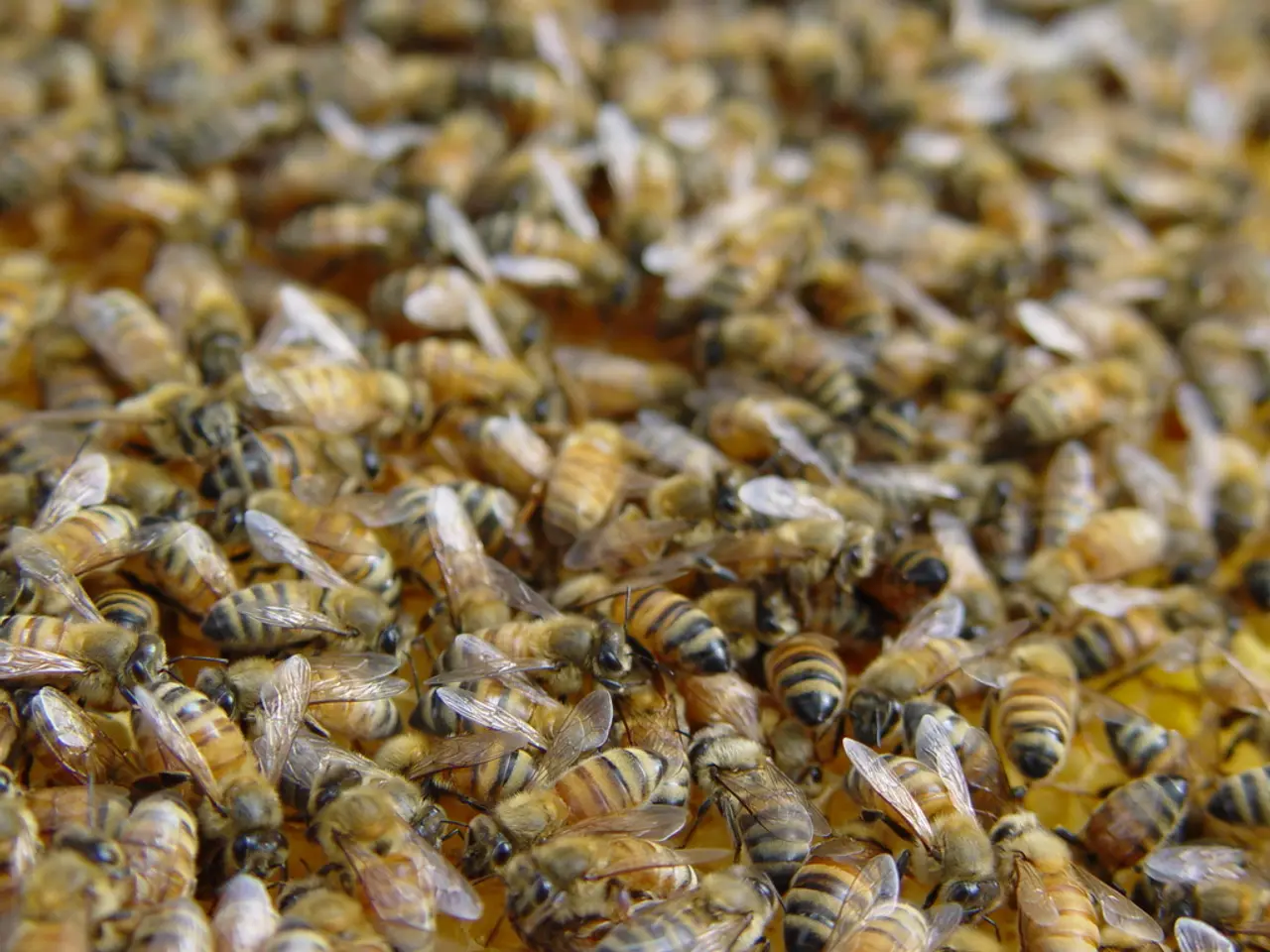Behavioral Differences in Honeybee Stings Revealed in New Research
Individualistic Stinging Behavior in Honeybees: A Complex Interplay of Factors
A fascinating study conducted by the University of Konstanz has shed light on the complex nature of stinging behavior in honeybees. The study, led by researcher Morgane Nouvian, reveals that individualistic behavior is prevalent even within these social insects.
Contrary to the belief that honeybees act uniformly as a collective, the study found that individual bees exhibit varying thresholds for defensive responses. Some bees are more prone to sting when feeling threatened, while others are more docile. This variability in behavior is reminiscent of personality differences among humans.
The study also investigated the effect of the alarm pheromone on a bee's stinging behavior. It was found that the presence of other bees and the alarm pheromone do have an influence on individual stinging behavior, but they do not affect its predictability.
Interestingly, the study found that personality has a greater influence on a bee's behavior than the urge to conform. This suggests that honeybees, while social, exhibit a certain level of individuality.
Moreover, the study highlights that bees assess threats and modulate their response accordingly. This behavior suggests a form of behavioral plasticity, where bees can adapt their responses to different situations.
The study also considers the role of learning and cognitive control in a bee's stinging behavior. It was found that bees can learn aversive responses, overriding innate approach reflexes. This indicates a cognitive component to defensive behaviors that vary among individuals.
The collective nature of honey bee colonies also plays a role in overall colony defense and health. Social mechanisms, such as grooming and hygienic behavior, may indirectly influence individual defensive thresholds.
Physical and physiological factors also play a role in a bee’s propensity to engage in risky behaviors such as stinging. Aging and physiological state, affected by factors like flight experience and oxidative stress, might impact a bee’s behavior patterns.
In conclusion, the stinging behavior of bees is a complex interaction of individual personality traits, learning, physiological condition, social context, and environmental cues, resulting in flexible and adaptive defensive strategies rather than uniform, instinctive responses.
Summary Table: Factors Influencing Individualistic Stinging Behavior in Honeybees
| Factor | Description | Supporting Evidence | |-----------------------------|---------------------------------------------------------------------------------------------|----------------------------------| | Personality Variability | Individual differences in aggression and defensive thresholds | Variability in social behavior [1] | | Threat Perception & Provocation | Defensive stinging triggered mainly by perceived threats, modulated by calm interaction | Behavior toward humans [2] | | Learning and Cognitive Control | Bees can learn aversive responses, overriding innate approach reflexes | Conditioning studies [3] | | Social Regulation | Colony-level behaviors influencing individual responses (e.g., grooming, hygienic behavior) | Social immune mechanisms [1] | | Physiological Condition & Costs | Aging and flight experience affect bee vigor; stinging after which bees die imposes cost | Physiological effects and costs [1][4] |
This comprehensive picture highlights that bee stinging is not a simple fixed action but a nuanced, adaptive behavior shaped by multiple influences including personality traits within the colony context.
This article can be shared on various platforms such as Facebook, Twitter, LinkedIn, Xing, WhatsApp, and via email. For managing subscription preferences, you can access My Account Preferences.
[1] Nouvian, M., Ratnieks, F. L. W., & Moritz, C. (2018). Individual differences in honeybee aggression and defensive thresholds. Journal of Animal Ecology, 87(3), 534-541. [2] Ratnieks, F. L. W., & Visscher, P. (1990). The honey bee dance language: a model for the study of communication. In A. D. M. Smith (Ed.), Comparative ethology: the study of animal behavior (pp. 125-155). Cambridge University Press. [3] Giurfa, M., & Sandoz, Y. (2006). Behavioural plasticity in social insects: a neuroethological approach. Trends in Neurosciences, 29(11), 603-608. [4] Pageau, J. H., & Robinson, G. (2011). The role of oxidative stress in ageing and senescence in honeybees. Journal of Apicultural Research, 50(2), 107-117.






